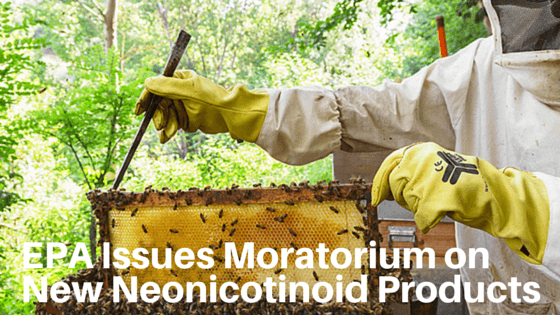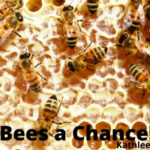RL for neonicotinoid pesticides—the ones largely held responsible for the sharp decline in bee colonies around the world.
The order does not affect neonicotinoids already on the market—including the massive numbers of plants sold in big box stores, including Home Depot, Lowe’s and Walmart, as well as other large garden centers. In fact, after the public outcry about stores selling plants already laced with neonics, these three mega-retailers recommended that home gardeners buy “bee friendly” flowering plants. In reality, more than half of those plants contained large doses of bee destroying neonicotinoids.
Agricultural operations are by far the largest users of neonicotinoids. The Center for Biological Diversity alleges that 80 to 90% of corn and soy seeds are treated with neonics before they are even planted. (Of course, this doesn’t even take into account GMO engineered and RoundUp ready seeds, which account for approximately the same figures in corn and soy crops.)
A recent study published in the Journal of the Federation of American Societies for Experimental Biology confirms that even low levels of neonics cause impairment of bees’ brains and contribute to colony collapse disorder, which is having a huge impact on the natural pollination process for a wide variety of food crops. They added that the neonics do not directly kill insect pollinators like bees; they cause them to perform poorly and severely impair a crucial cog in the pollination cycle.
Neonicotinoid contamination of the nectar and pollen consumed by bees is around 2.5 parts per billion –that adds up to about 1 teaspoon in an Olympic swimming pool. There has been wide debate over whether this level is enough to affect the bees. To answer this question, the research team fed bumblebees this low level of neonicotinoid and measured its accumulation in the bee brain.
At this level, some neonicotinoids were fast acting, shutting down the major site of energy production, the mitochondria, in brain cells. At even lower levels, brain cells become vulnerable to stimulation by the normal neurotransmitter used to transmit information. Under these conditions, bees struggle to learn important life skills, like recognizing the scent of a particular food flower or remembering their way back to the hive.
A task force set up by the International Union for Conservation of Nature (IUCN) recently released the results of a four-year meta-analysis finding what it says is “conclusive” evidence that the pesticides are “a key factor in the decline of bees.” In addition. IUCN said “neonics” are responsible for a host of other environmental problems. The task force called the neonic class of chemicals the “new DDT.” Except, they are far more destructive because they wipe out the bottom of the food chain. Plus, neonics are 5,000 to 10,000 times more toxic than DDT.
Not surprisingly, the only people who don’t think there’s any link between the pesticides and bee die-offs are the manufacturers and their employees, including Bayer, which sells more than a billion tons of the poison every year.
Germany banned neonics in 2013, after a massive bee die-off in 2008 was attributed to Clothianidin, a member of the neonic class.
While the EPA’s moratorium is a step in the right direction, if anything, it protects Bayer’s substantial chunk on the market from competition. Plus, research on these new applications is industry funded, much like the FDA’s new drug research. It’s nearly impossible to find objective information give the financial interest the pesticide industry has in keep neonics on the market.
The action came after President Obama urged “a moratorium on neonicotinoid and their chemical cousins, other system pesticides,” in response to pleas from more than 125 farm, food safety, beekeepers, faith and environmental groups and petitions signed by more than 4 million Americans.
In the past few months, Minnesota regulators have raised the possibility of banning neonicotinoids for use in the state. Action could be coming in the next few weeks. This definitely bears watching.
Clearly, public action reached the President’s attention. Let’s keep up the pressure. It seems like most of the petitions are closed for now, but watch this space. I’ll keep you updated.







